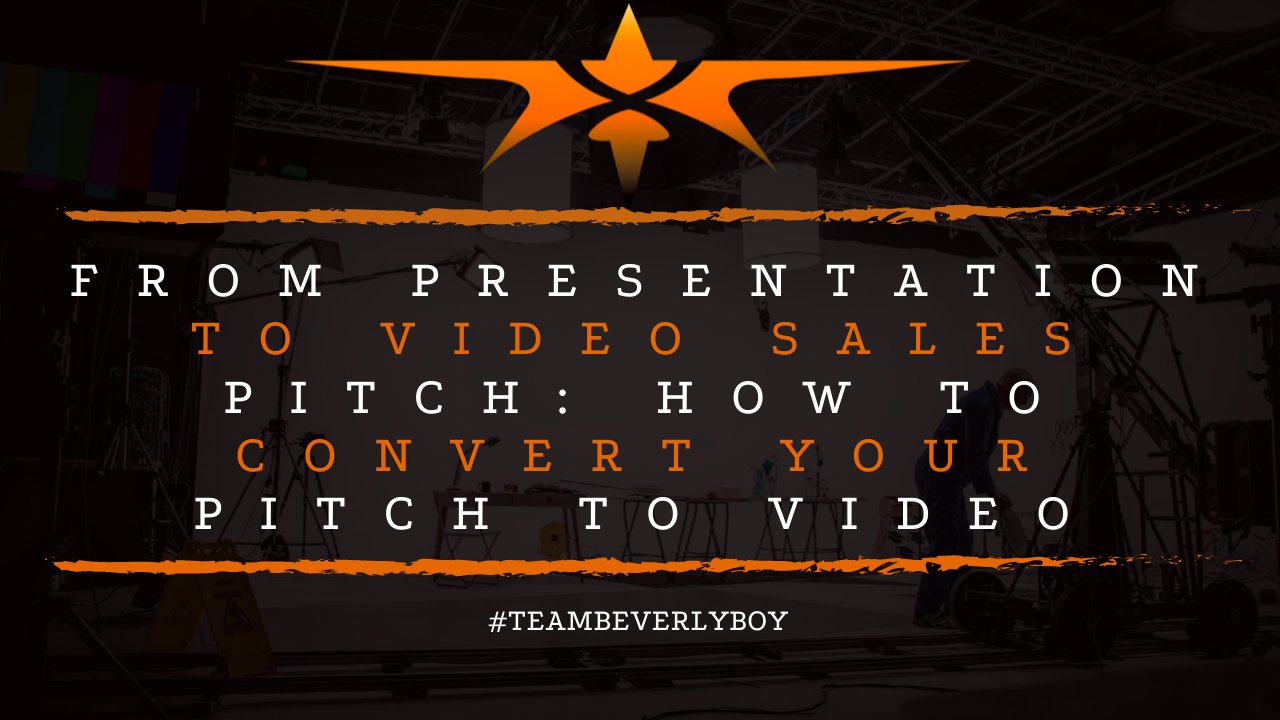
From Presentation to Video Sales Pitch: How to Convert Your Pitch to Video
As more businesses shift to online presentations and virtual sales, it’s quite common for sales managers to seek ways that they can adjust their sales presentations to meet changing audience habits. Figuring out how to convert your sales presentations to a video sales pitch is something that might take a bit of support from a professional production crew like Team Beverly Boy, but it’s certainly not something you can afford to overlook or put off any further.
Consumers are looking for video from the brands and businesses that they follow now more than ever before. If you’re not presenting your sales pitches via video, you could be leaving a ton of opportunity on the table, and you’re probably missing a huge audience. To help you understand the process of shifting your presentations from in-person or via teleconference to a video sales pitch, we’ve put together a list of how to convert your sales pitch to video.

Step 1: Identify Target Audience
Producing a video sales pitch means that you won’t have the ability during the presentation to adjust your pitch to meet your unique audiences’ needs. But that doesn’t mean you can’t accommodate different audiences with your video sales pitches. You’re just going to have to plan ahead and identify the target audience for each pitch video that you create.
A single video cannot possibly accommodate the needs of every audience, so you’ll need to decide on a target audience for your video sales pitch or you’ll have to consider making more than one video to appeal to multiple audiences. There is no one-size-fits-all approach to this process.
Step 2: Identify a Goal
Producing a video sales pitch will typically have the goal of “generating sales,” but you might have other goals if you’re not an ecommerce or retail business. For instance, your goal might be to, “generate leads,” or to “encourage website clicks,” or to, “book in-person meetings.” Whatever the goals are, you want to have a plan in place before you convert your pitch to video so that you can properly define the goal and so that you can later determine whether your video was a success or not.

Step 3: Define Main Points
What are the top 3-4 points or key pieces of information that you want your audience to take away from your video? This information is important as it will help you to define the messaging for your sales pitch video script. As you define your main points, consider the following:
- You’re selling a solution to a problem.
- You should be selling your business too, as the best potential provider of said solution.
- You want to prove your business is the authority source.
Keep these considerations in mind when you’re formulating the script for your video.
Step 4: Define the Tone of Your Video Sales Pitch
Every video, whether it’s a video sales pitch, or any other kind of video content, is going to have a unique tone about it that should align closely with your business. Defining the emotional tone for your video sales pitch is key because this is going to align your message with the target audience and personally connect with them.
Your tone could be humorous, family oriented, fun, nostalgic or one of many other potential emotional tones. The idea is to choose a tone that closely relates to your brand and that will connect with your target audience.

Step 5: Create the Hook
Structuring your video sales pitch so that it hooks your target audience right from the start is important to the success of your pitch. Creating a hook that captures the interest of your audience upfront will increase the likelihood that they stick around and watch your entire video.
Audience attention spans are typically about 8 seconds. That means that you’ve got to grab the attention of your audience in the first 8 seconds of your video, or risk them scrolling on past. By hooking your audience early, you increase their interest in your video and if you focus heavily on delivering engaging content through the rest of your sales pitch, you can bet they’ll get your call to action.
Step 6: Define the Call to Action
The call to action is going to drive home the point of your video sales pitch and encourage your audience to purchase, call, book, or otherwise convert into a customer. This is your chance to hammer home any key points and to present exactly what you want your audience to “do” when they are done watching your video sales pitch. Your call to action should be clear, concise, and directly related to the rest of your video pitch!

Step 7: Coordinate Visuals, Audio & Music
As you navigate the process of converting your pitch to video, the next big step is to begin thinking about the visuals, audio and music that will be used in your pitch. Producing a video sales pitch can get incredibly technical, particularly if you want to share a story with your target audience and visually help them to connect with your brand.
We recommend working closely with a professional film crew, like Beverly Boy Productions, to produce the visuals for your video sales pitch and to perform any final video editing. This way, your sales pitch is going to be professionally produced and will be most likely to captivate your audience. A professional crew will assist with all of the important elements of producing your sales pitch video from script writing to filming and editing.
Once you’ve converted your sales pitch to a video sales pitch you can begin utilizing the video for: your website and landing pages, your social media pages, your email campaigns, and anywhere else that video can be used. Your prospective customers are already looking for videos anyway, so why not deliver your next sales pitch via a video campaign?


